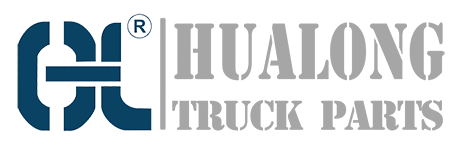The Importance of hydraulic cylinders drawings
Hydraulic cylinders are essential components of various machinery and equipment, providing the force required for linear motion. To design and manufacture these cylinders, accurate and detailed drawings are crucial. In this article, we will explore the significance of hydraulic cylinder drawings and delve into different aspects related to them.
Understanding Hydraulic Cylinders Drawings
Hydraulic cylinder drawings serve as a visual representation of the cylinder's design, dimensions, and specifications. These drawings provide engineers, manufacturers, and technicians with vital information necessary for successful production, installation, and maintenance of hydraulic cylinders.
Components and Dimensions
Hydraulic cylinder drawings typically include detailed information about the various components that make up the cylinder, such as the barrel, piston, rod, end caps, seals, and ports. The dimensions of these components, including their diameters, lengths, and tolerances, are also specified. These drawings ensure that the correct dimensions are used during fabrication and assembly processes, guaranteeing optimal performance and compatibility.
Material Selection and Specifications
Selecting the right materials for hydraulic cylinders is crucial for their durability, functionality, and overall performance. Hydraulic cylinder drawings usually specify the materials to be used for different components, such as the barrel, piston, rod, and seals. Additionally, drawings provide information on material specifications, including hardness, tensile strength, and surface finish requirements, ensuring the use of appropriate materials for each component.
Assembly and Mounting Details
Hydraulic cylinder drawings provide clear instructions on how to assemble the various components of the cylinder. They include step-by-step guidelines, showing the correct order of assembly and the necessary hardware, such as bolts and fasteners. The drawings also indicate the mounting details, including the type of mount and any specific requirements for proper installation.
Seal Types and Placements
Seals play a crucial role in preventing leakage and maintaining the efficiency of hydraulic cylinders. Hydraulic cylinder drawings specify the types of seals required for different areas, such as piston seals, rod seals, and wiper seals. They also indicate the precise placement of these seals, ensuring a proper seal configuration to prevent fluid leakage and contamination.
Fluid Ports and Connections
Hydraulic cylinders require fluid ports and connections for the supply and return of hydraulic fluid. Drawings illustrate the location, size, and type of ports to be used, such as threaded or flanged connections. They also provide details on the required fittings and accessories, enabling proper integration of the cylinder into the hydraulic system.
Pressure and Load Ratings
Hydraulic cylinder drawings include important information regarding the pressure and load ratings of the cylinder. These specifications ensure that the cylinder is designed and manufactured to withstand the required operating conditions. By following these guidelines, engineers can select the appropriate cylinder for a specific application, preventing premature failure and ensuring the safety of the machinery.
Tolerances and Surface Finishes
Precision and quality are vital when it comes to hydraulic cylinders. Drawings provide information on the required tolerances for critical dimensions, ensuring accurate manufacturing. They also specify the desired surface finishes, such as roughness and smoothness, for different components. Adhering to these specifications guarantees the desired performance and longevity of the hydraulic cylinder.
Testing and Inspection Requirements
Hydraulic cylinder drawings often outline the testing and inspection requirements for quality assurance. These include procedures for checking dimensions, verifying material properties, and performing pressure tests. By following these guidelines, manufacturers can ensure that each hydraulic cylinder meets the necessary standards and is free from defects.
Maintenance and Repair Guidelines
Even after installation, hydraulic cylinders may require maintenance or repairs. Drawings provide valuable information for technicians on how to disassemble, inspect, and replace components when necessary. They also include guidelines for troubleshooting common issues and ensuring the cylinder's proper operation throughout its lifespan.

